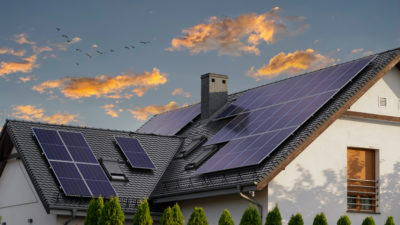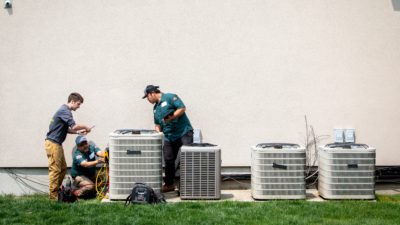There are many ways to make your home more efficient to save money and energy year-round such as upgrading your insulation, installing a heat pump to heat and cool your home, or updating your kitchen appliances such as getting an induction stove.
In a 2022 Consumer Reports’ survey, about 70% of respondents said they would consider replacing their current cooktop with an induction stove. To help homeowners make the switch, the Sponsors of the Mass Save® program and the federal government, through the Inflation Reduction Act, have made available incentives bigger than ever.
When you replace a natural gas or propane stove with an induction stove, you could be eligible for a $500 rebate through the Mass Save program, plus 0% financing to cover the remaining cost. Through the Inflation Reduction Act, you could also access up to $840 toward an induction stove, depending on your household income.
How Does an Induction Stove Work?
A cooktop in your home probably uses a flame or burner that radiates and conducts heat to your pots and pans. Cooking with an induction stove uses an electromagnetic field that transfers currents directly to pots and pans placed on the surface. As soon as you remove the cookware from the surface, the heating stops.
Making the switch to an induction stove comes with many benefits such as fast cooking and cleanup, enhanced safety, and energy savings.
Better and Quicker Cooking
An induction cooktop heats more efficiently, because it heats your cookware directly. A Consumer Reports study says that it boils water 20-40% faster than gas and traditional electric cooktops. Putting 4 cups of water in a 1.5-quart tea kettle will take about 4 minutes to arrive at a full boil, with it taking about 6 minutes on a gas stove. Raising and lowering the heat when you’re cooking is very responsive, and if you want the water to stop boiling, you can do that instantly.
The electromagnetic field also allows for more precise, even heating. An induction stove can maintain a very low temperature with ease; this can be hard to accomplish on gas stoves or radiant-electric versions. Some induction stoves even have a simmer or melt setting which gets the content of your pot to the perfect temperature.
Easy Cleanup
Cool down and cleanup time is also quick! The glass top only gets hot directly under a pan so splatters don’t cook onto its surface like you may experience with your radiant-electric cooktop or get under the grates of your gas range. A quick wipe with a damp cloth is all it takes!
Enhanced Safety
Induction stoves are safer than gas or radiant-electric models because they don’t have flames or direct heat. Your pot heats up when you cook, but the glass surface of the stovetop remains cool. Also, the stove cannot accidentally be turned on and will automatically shut off if a pot isn’t detected. If you have a household with small children, older individuals, or someone with a disability, these enhanced safety measures are an important feature.
You also don’t have the risk of exposure to carbon monoxide, or the potential for gas leaks, explosions, or fires (like you would with a gas range). In addition, no risk of burns and no reason to run home because you think you left the stove on by accident.
ADA-Compatible
The majority of induction stoves meet ADA requirements, with features such as the positioning of controls at the front of the cooktop to avoid reaching over hot pots. Because it doesn’t heat up without a pan, it’s safer for those who have challenges with hearing, vision, or mobility. Some induction stoves come with full-surface cooking, meaning you can cook with a pot anywhere on the cooktop which could be helpful for individuals with impaired vision, or those with limited reach. There are also Wi-Fi-enabled options that can work with voice commands.
Environmentally Friendly
Induction appliances lose much less energy in the form of heat than radiant-electric or gas appliances. According to the Environmental Protection Agency (EPA), induction is 85% efficient, with radiant electric coming in at 75-80%, and gas following at only 32% efficient.
In addition, because induction stoves run cooler and cleaner (lower rates of air pollution!), it lowers the load on ventilation and HVAC systems in your home. They can also run on renewable forms of electricity such as wind, geothermal, or solar – gas can’t do that!
Savings Available
You could be eligible for a $500 rebate through the Mass Save program, plus 0% financing for up to 7 years. Through the Inflation Reduction Act, you could also access up to $840 toward an induction stove, depending on your household income.
There are also plenty of other incentives to improve the efficiency of your home such as 100% off sealing air leaks, 75-100% off insulation upgrades, up to $10,000 in heat pump rebates, and more!
At HomeWorks Energy, we love helping homeowners make their homes greener. We can provide home energy assessments and heat pump consultations at no cost, plus we perform any HVAC and/or insulation upgrades in-house.
Call (781) 305-3319 for more information or go to HomeWorksEnergy.com to browse our services. We’re a longtime Mass Save partner, so we can help you access the incentives and rebates you need to accomplish your home energy efficiency goals.
Resources
U.S. Department of Energy
https://www.energy.gov/articles/making-switch-induction-stoves-or-cooktops
The New York Times
https://www.nytimes.com/wirecutter/blog/is-an-induction-stove-for-you/








